[EN/PL] ‘Retrogradation #2’ by Patrycja Orzechowska at Arsenal Gallery in Białystok
![[EN/PL] ‘Retrogradation #2’ by Patrycja Orzechowska at Arsenal Gallery in Białystok](https://blokmagazine.com/wp-content/uploads/2020/02/14a-1200x800.jpg)
[EN]
Retrogradation is a term from the glossary of astronomy. It describes the apparent reverse motion of a planet resulting from the relative orbital progress of the Earth and such planet, nothing but an optical illusion observed from Earth. The phenomenon itself has been detected in ancient times already, its Latin name derived from Hellenistic astrology. Retro stands for “backwards” or “of the past”, gradus – for “gradation”, “growth”, “ascending order”. In her exhibition’s title, Patrycja Orzechowska has offered the word a new and metaphorical meaning, the prefix hinting at a glance towards the past or a step back rather than past-inspired styling. The core references the artist’s hoarding strategy; gathering diverse objects, she has created a curious collection. The sum of both meanings yielded a name for a visual tale of man’s productivity, blending visions of the past and the future.
Orzechowska’s artistic strategy involves hoarding, rediscovering an object resulting from human (and non-human) activity. The artist scrutinises the production excess we exist in, in search of worn defective objects: those evidently created by hand and those resembling natural creations; industrial waste; parts of a larger whole. Usually considered useless and worthless, they are rarely of interest to other collectors. Orzechowska uses her growing collection to create installations and assemblages, altering the meaning of objects, turning ordinary companions of everyday life into artworks. Removed from their original context and made part of the artist’s works, they embark upon an ontological journey from what they were to what they may become.



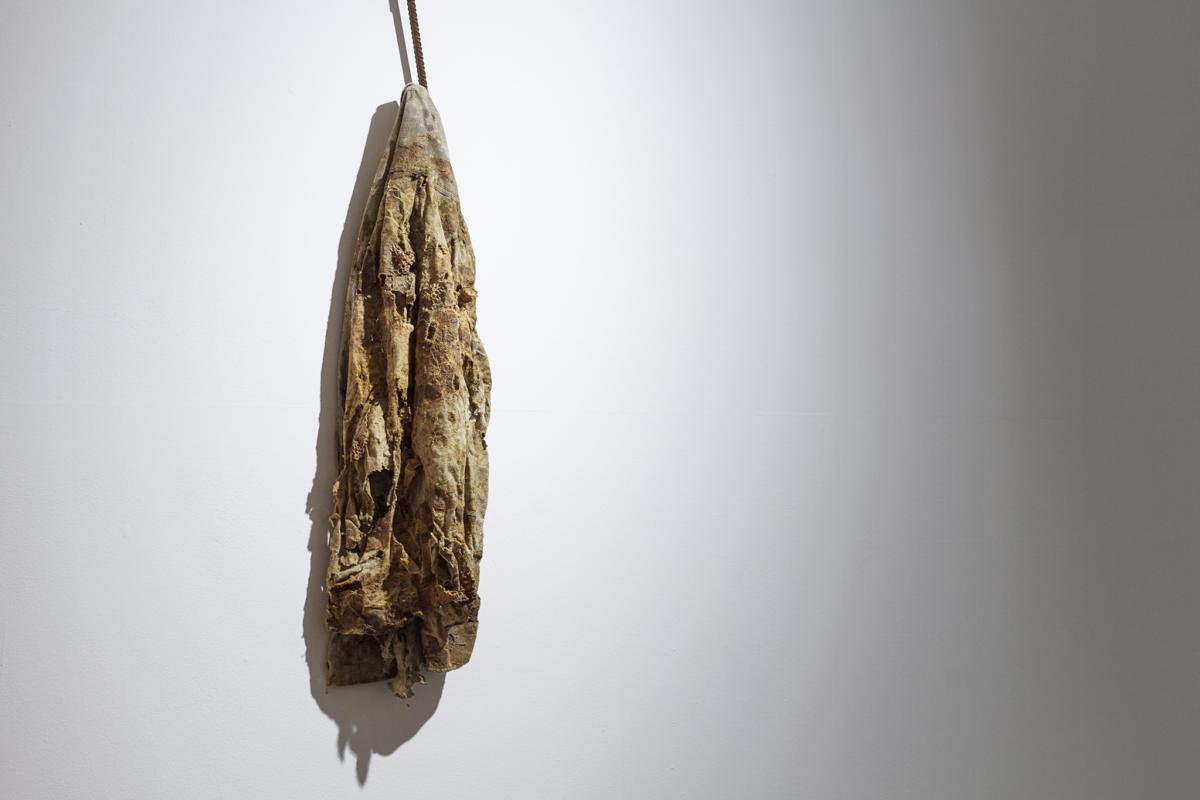

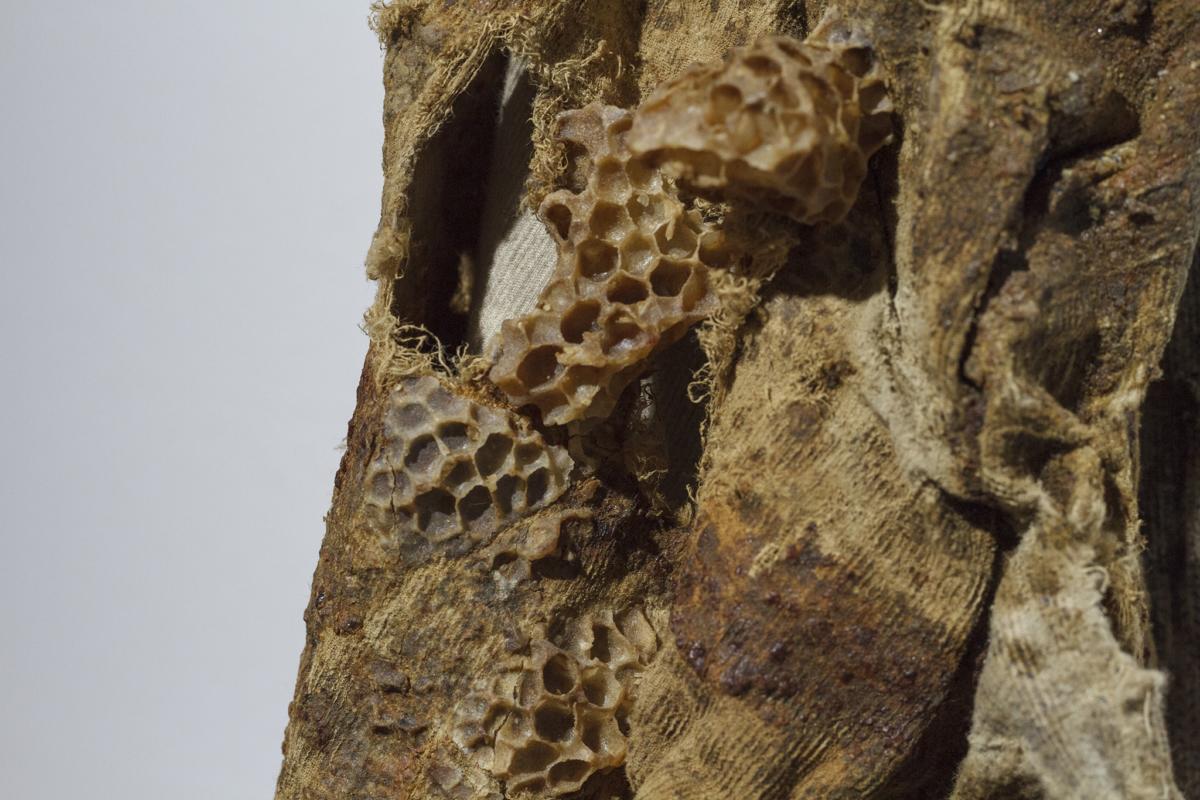
“How to carry the World on one’s back?” – one of the most popular quotes from Aby Warburg, historian and theoretician of art, culture expert, author of the Mnemosyne Atlas. How does one carry the past and future alike once we realise we know both everything and nothing of one and the other? Retrogradation, Orzechowska’s title installation, comprises Atlas totems supporting the heavy load of planets. The entire work has been arranged with the use of components displaced by modern technologies, objects we will soon be viewing in museum cabinets or digging up at archaeological sites. The opening work of the virtual essay points to the artist’s focal point of interest: mankind’s primary propensity for changing “a planet into a world”, to quote Hannah Arendt.
Atlas is a mythological elevator, a Titan responsible for supporting the heavenly sphere – yet also a collection of maps and illustrations describing a given geographical area: everything and anything collected as part of human knowledge and enclosed in a rational frame. Orzechowska uses the atlas critically, as a useful tool in perceiving man’s productivity. Yet human labour is not the most interesting thing to ponder; the resulting objects are. The artist confronts the visuality of objects of material culture created across assorted historical periods, pointing to culture’s inner schizophrenic fissure. The Thoughtforms cycle resounds with similarities between the prehistoric and natural and the secondary and artificial, in an afterimage of primary needs. These works are accompanied by glass Dewar flasks, inner thermos tubes transformed by the artist in her retro-futuristic narrative into a face urn cemetery. In her photography series Ashes to Ashes, Orzechowska observes Balinese cremation rites forming part of a Ngaben funeral ceremony. Inspired by the vista of smouldering ashes, she created installations of assorted remnants: ceramics, charred fruit, eggshells. Rite of passage flames fuse objects and animal and human bodies into amalgamate matter. Black still lives arranged by the artist against the exotic backdrop of Balinese nature seem eerie; were it not for the well-known context, they could well evoke an impression of timelessness. They are neither the past nor the future or the present. In view of the incessant circulation of matter, time also becomes relative, after all.

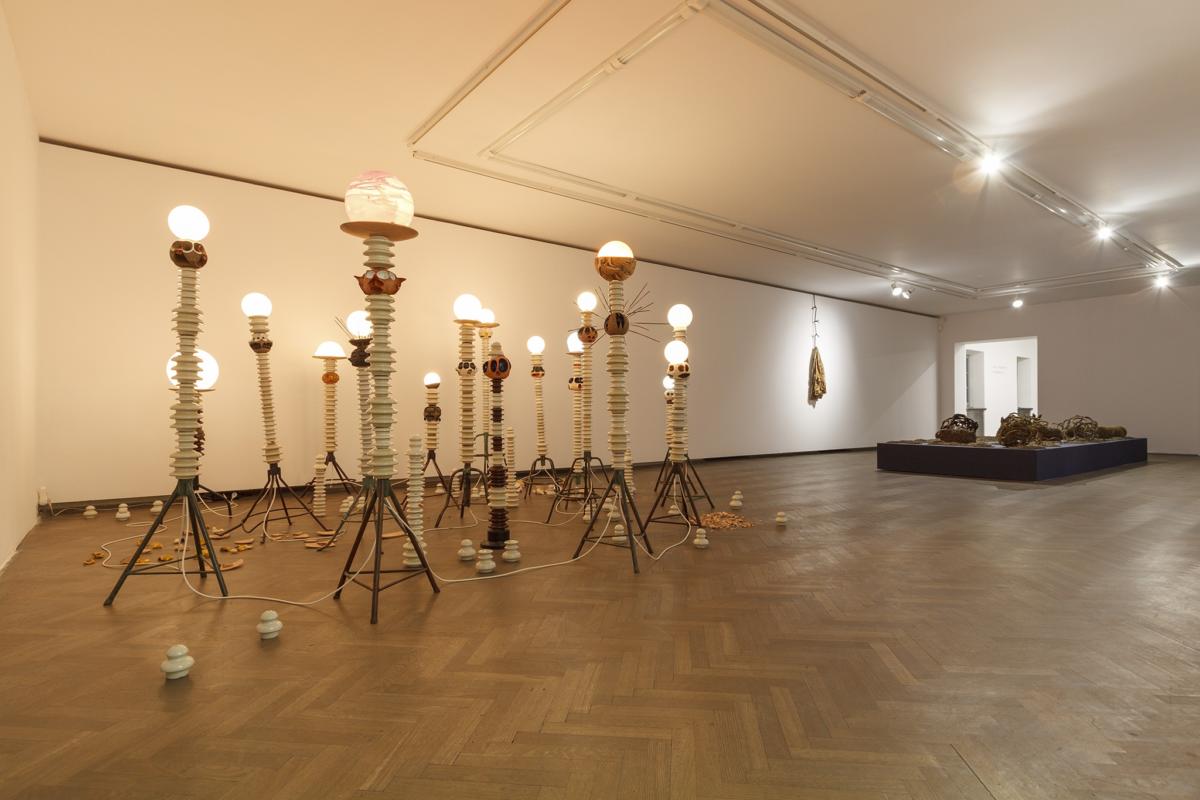
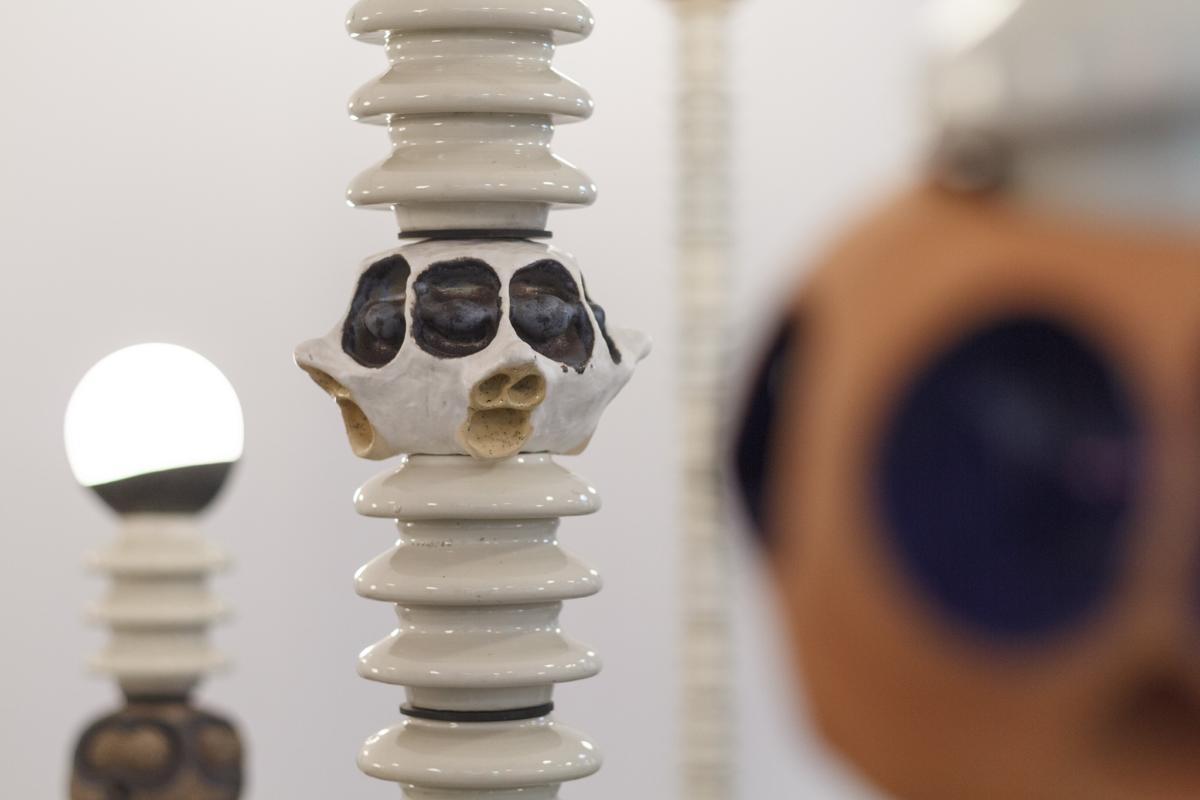
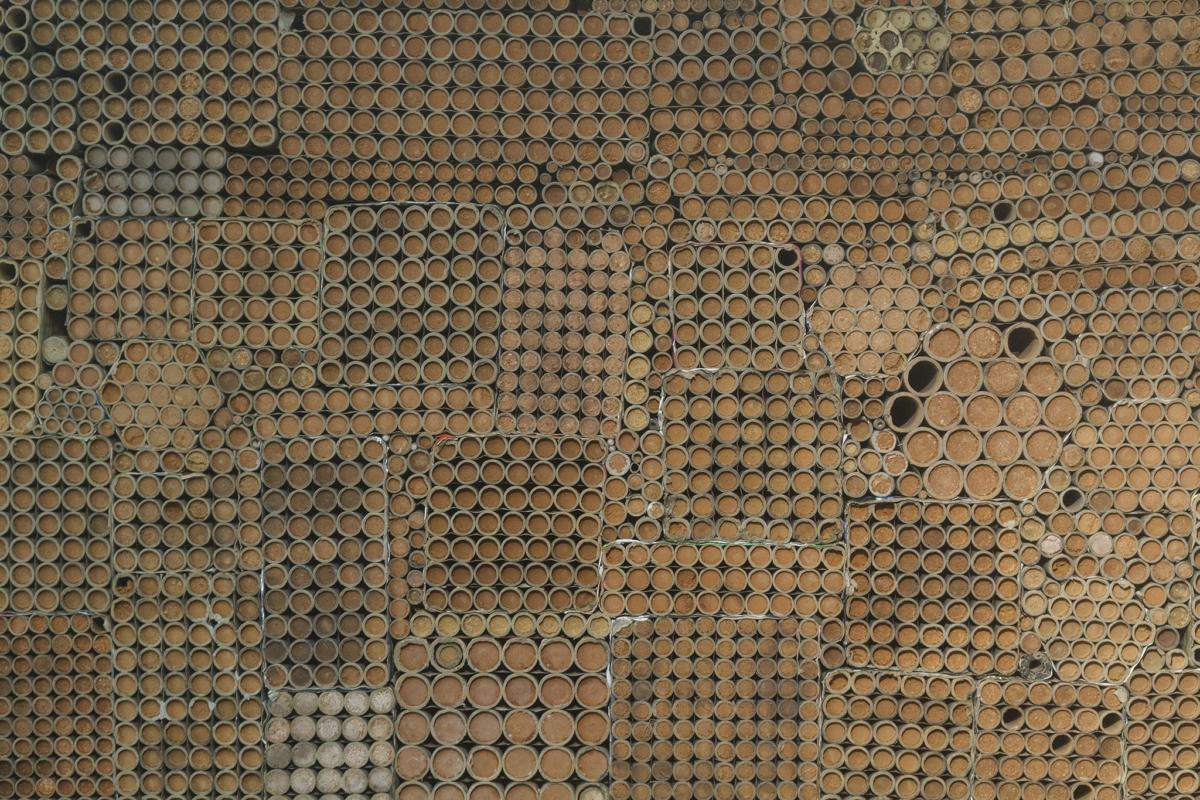

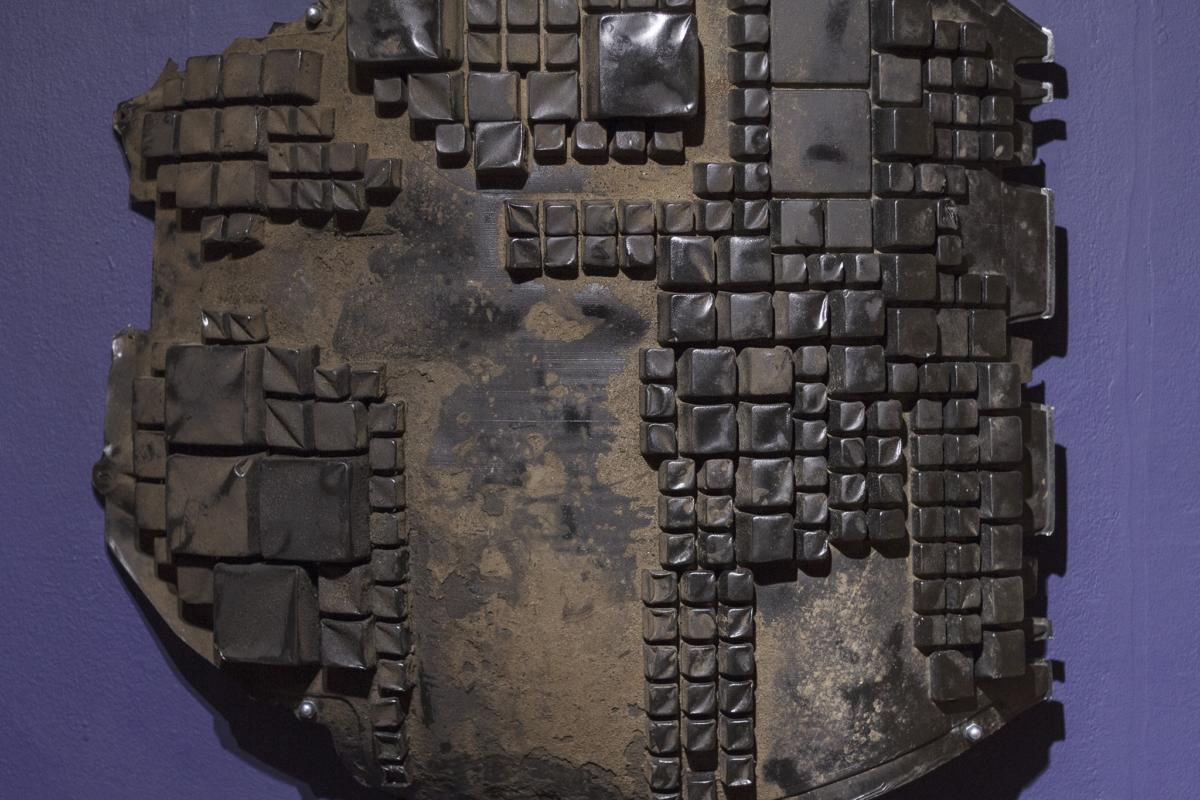
Retrogradation #2 is a yet another rendition of Orzechowska’s project which “travels” across fields and meanings with objects as her dramatis personae. From one version to another, objects used by the artist are afforded new reincarnations, chances for a new life. “Objects which surround us say more about us than the words we speak. Manufactured again and again, the materiality we use and discard is a challenge we have to face here and now,” the artist says. This challenge may evolve into positive/ creative or negative/ destructive scenarios. It all depends on us.
text by Joanna Kobyłt
English translation from the Polish language by Aleksandra Sobczak-Kövesi
***
[PL]
Retrogradacja to termin pochodzący ze słownika astronomii. Opisuje pozorny ruch wsteczny planety w danym układzie orbitalnym, będący jedynie złudzeniem optycznym obserwowanym z Ziemi. Zjawisko to zostało zauważone już w starożytności, a jego łacińska nazwa wywodzi się z astrologii hellenistycznej. Retro oznacza „wstecz” lub „w przeszłości”, a gradus to „stopniowanie, wzrost, uporządkowanie rosnące”. W tytule swojej wystawy Patrycja Orzechowska nadaje temu słowu nowy, metaforyczny sens. Przedrostek oznacza tu nie tyle stylizowanie na przeszłość, co spojrzenie w jej kierunku, ruch wstecz. Rdzeń natomiast odnosi się do zbieraczej strategii artystki, która gromadząc różnorakie obiekty, tworzy osobliwą antykolekcję. Sumą obu znaczeń nazwana została wizualna opowieść o wytwórczej działalności człowieka łącząca w sobie wizje przeszłości i przyszłości.
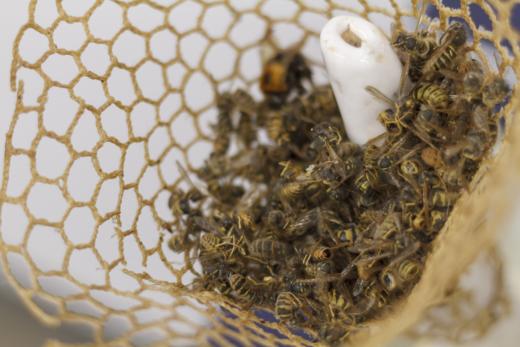
Patrycja Orzechowska, ‘Wasp Pavilion’, sculpture, 2014 || Patrycja Orzechowska, “Pawilon Os”, rzeźba, 2014
Strategią artystyczną Orzechowskiej jest zbieractwo, dowartościowujące przedmiot jako rezultat ludzkiej (i nie tylko) działalności. Z otaczającego nas produkcyjnego nadmiaru artystka przechwytuje obiekty zużyte, niedziałające, te ewidentnie stworzone ludzką ręką i te sprawiające wrażenie wytworów natury, odpady przemysłowe, fragmenty większej całości. Zazwyczaj uznawane za nieprzydatne i bezwartościowe rzadko interesują innych kolekcjonerów. Z narastającego latami zbioru Orzechowska tworzy instalacje i asamblaże, zmieniając znaczenie przedmiotów ze zwykłych towarzyszy życia codziennego na dzieła sztuki. Wyrwane z oryginalnego kontekstu i umieszczone w pracach artystki rozpoczynają ontologiczną wędrówkę pomiędzy tym, czym były, a tym, czym mogą być.
„Jak unieść świat na własnych barkach?” – to jeden z najpopularniejszych cytatów z Aby’ego Warburga, historyka i teoretyka sztuki, kulturoznawcy, twórcy Atlasu Mnemosyne. Jak unieść przeszłość i przyszłość, kiedy wiemy o jednej i drugiej niemal wszystko i nic zarazem? Tytułowa instalacja Orzechowskiej Retrogradacja składa się z totemów-atlasów dźwigających ciężary planet. Całość zaaranżowana została z elementów wypartych przez współczesne technologie, przedmiotów, które lada moment będziemy oglądać tylko w muzeach lub wykopywać na stanowiskach archeologicznych. Otwierająca wizualny esej praca sygnalizuje to, co artystkę interesuje najbardziej: pierwotną inklinację gatunku ludzkiego do zmiany – jak nazwała to Hannah Arendt – „planety w świat”.

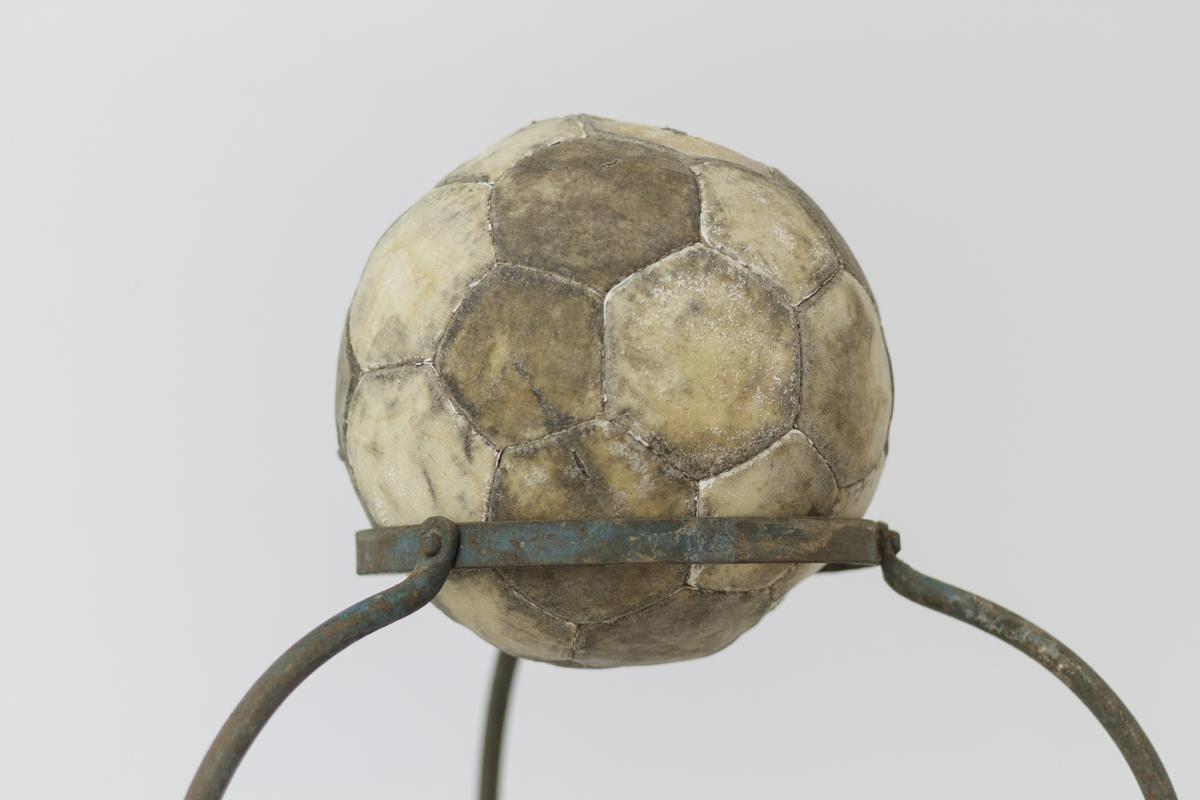

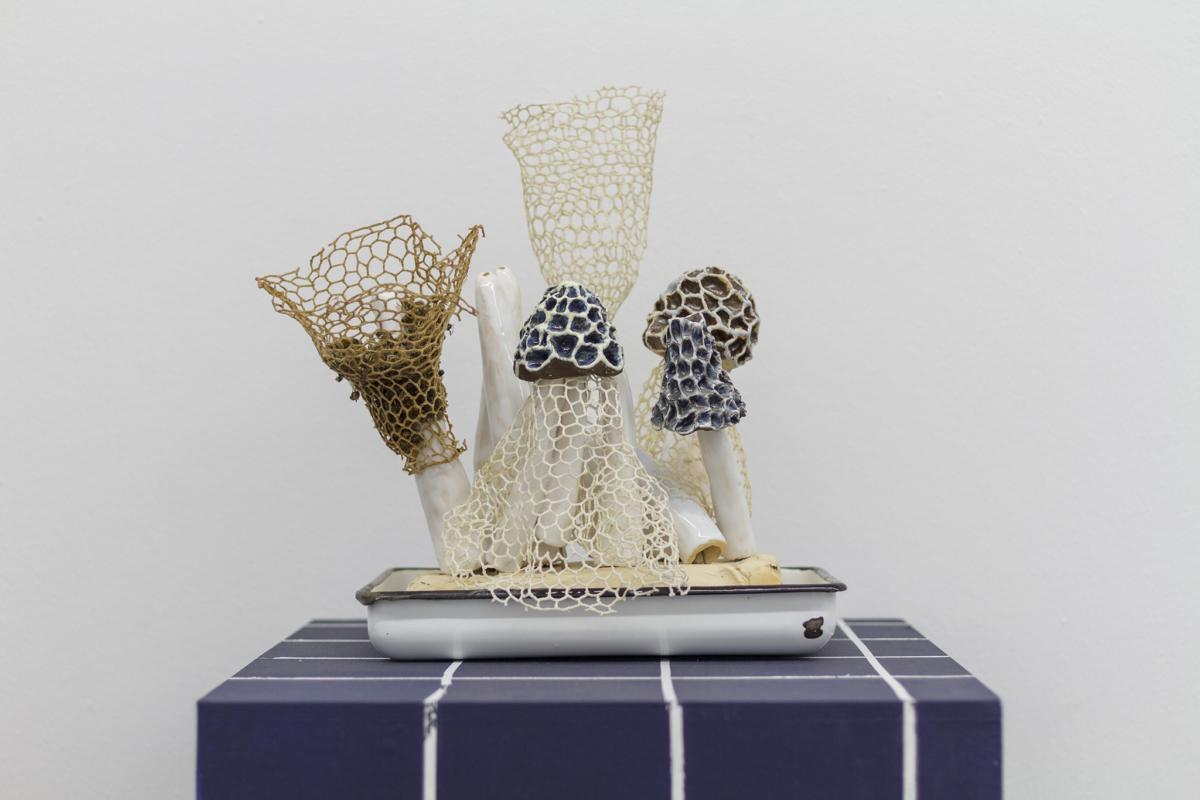
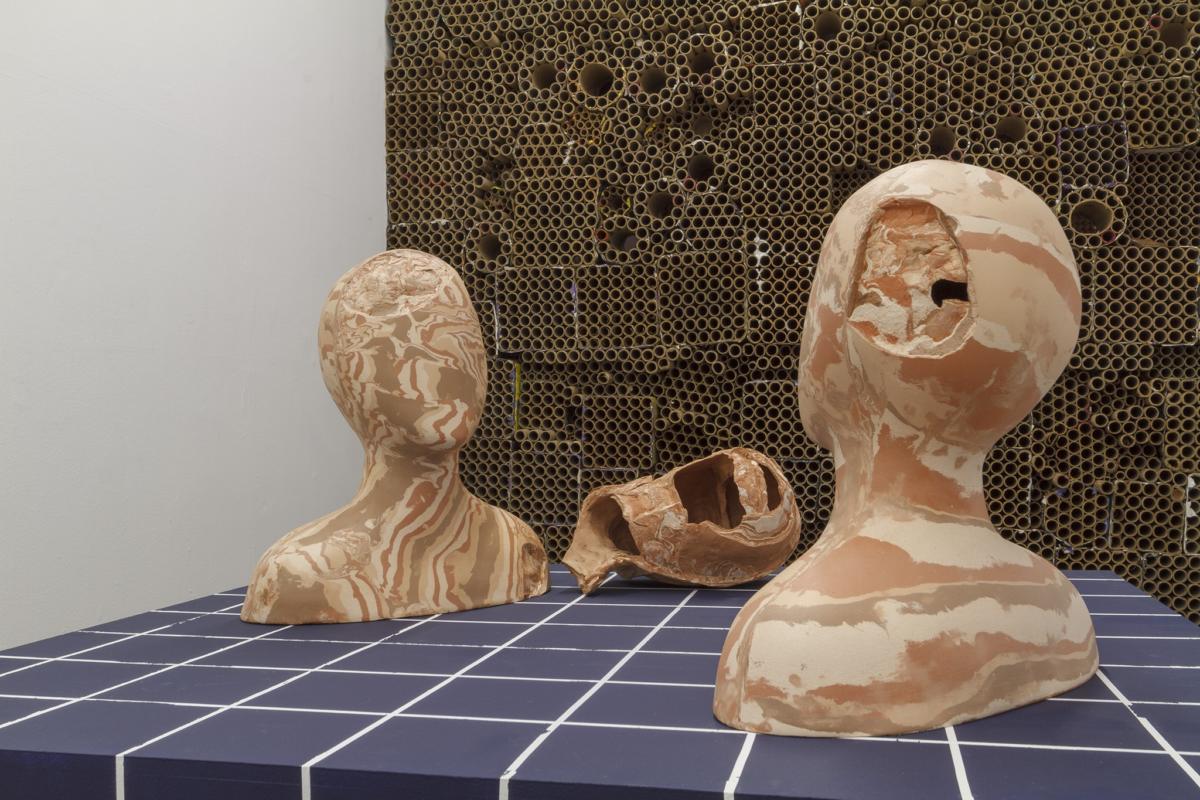
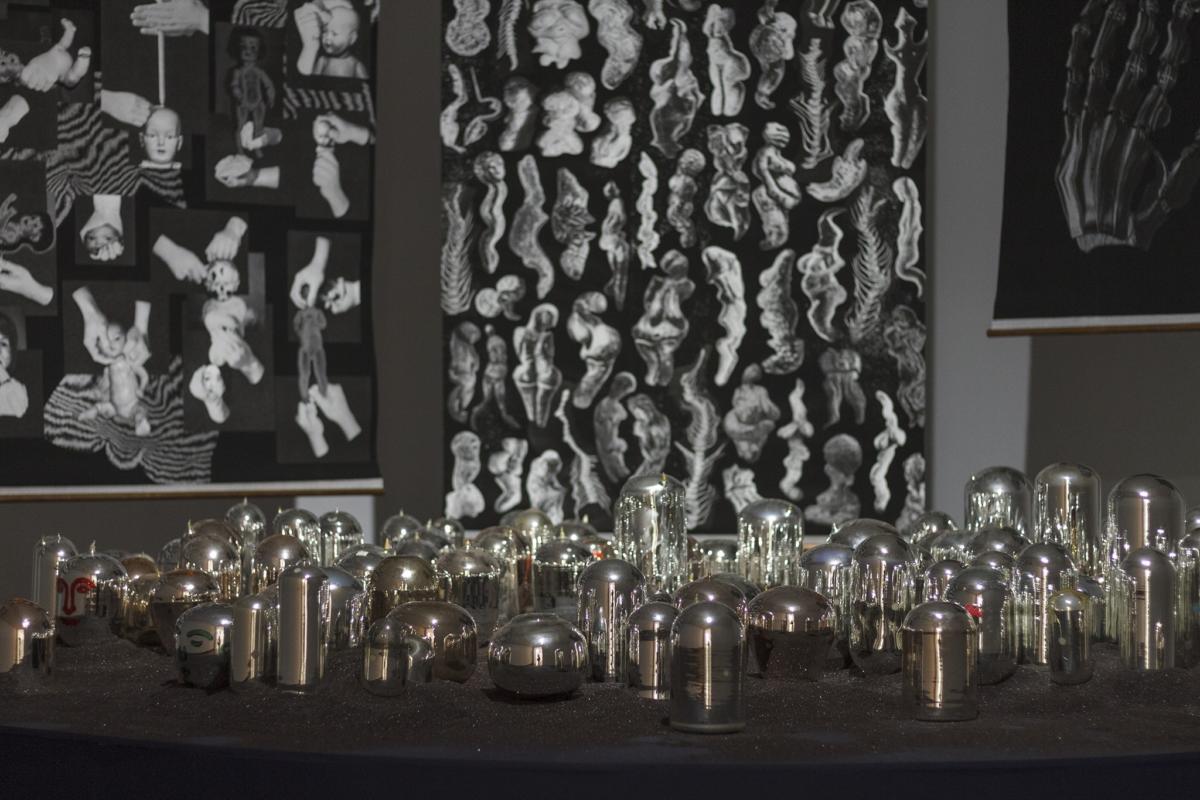
Atlas to mitologiczny dźwigacz, tytan podtrzymujący sferę niebieską – ale także zbiór map, ilustracji dotyczących danego obszaru geograficznego, słowem wszystko, co do tej pory ludzka wiedza zgromadziła i zamknęła w racjonalnych ramach. Orzechowska używa atlasu krytycznie jako narzędzia do przyglądania się wytwórczej działalności człowieka. Jednak to nie praca ludzkich rąk jest najbardziej interesująca, lecz to, co spod nich wychodzi – przedmioty. Artystka zestawia wizualność obiektów kultury materialnej stworzonych w różnych okresach historycznych, ukazując schizofreniczne rozdarcie wewnątrz kultury. W cyklu Myśloformy wybrzmiewają podobieństwa pomiędzy tym, co prehistoryczne, naturalne, a tym, co wtórne i sztuczne, stanowiące powidok pierwotnych potrzeb. Pracom tym towarzyszą szklane naczynia Dewara (wnętrza termosów), które w retrofuturystycznej narracji artystki zmienione zostały w cmentarzysko urn twarzowych. Z kolei w serii fotografii Ashes to Ashes Orzechowska obserwuje balijskie rytuały ciałopalenia składające się na ceremonię pogrzebową Ngaben. Zainspirowana scenerią tlących się popiołów tworzyła instalacje, wykorzystując resztki ceramiki, zwęglonych owoców i skorupek jaj. Płomienie rytuału przejścia scalają przedmioty, ciała zwierząt i ludzi w jedną materię. Czarne martwe natury ustawione przez artystkę na tle egzotycznego krajobrazu balijskiej przyrody wydają się niesamowite; gdyby nie znany kontekst, mogłyby sprawiać wrażenie bycia poza czasem. Nie są ani przeszłością, ani przyszłością, ani teraźniejszością. Wobec nieustającego obiegu materii czas jest przecież wartością względną.
Retrogracja #2 to kolejna edycja „wędrującego” w różne obszary i znaczenia projektu Orzechowskiej, w którym główną rolę odgrywają przedmioty. Podczas kolejnych odsłon obiekty wykorzystywane przez autorkę otrzymują nowe wcielenia i możliwości żywotów. „Otaczające nas rzeczy mówią więcej o nas samych niż wypowiadane przez nas słowa. Wciąż na nowo produkowana, zużywana i wyrzucana materialność jest wyzwaniem, z którym musimy zmierzyć się już teraz” – mówi artystka. Wyzwanie to można rozwinąć w pozytywne, twórcze, jak i negatywne, destrukcyjne scenariusze. Wszystko zależy od nas.
Joanna Kobyłt
Imprint
| Artist | Patrycja Orzechowska |
| Exhibition | Retrogradacja #2 |
| Place / venue | Arsenal Gallery in Białystok |
| Dates | January 10 – February 13 2020 |
| Photos | Maciej Zaniewski |
| Index | Arsenal Gallery in Białystok Joanna Kobyłt Patrycja Orzechowska |
